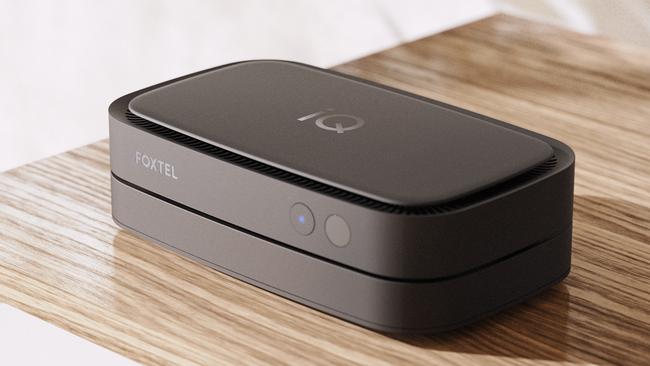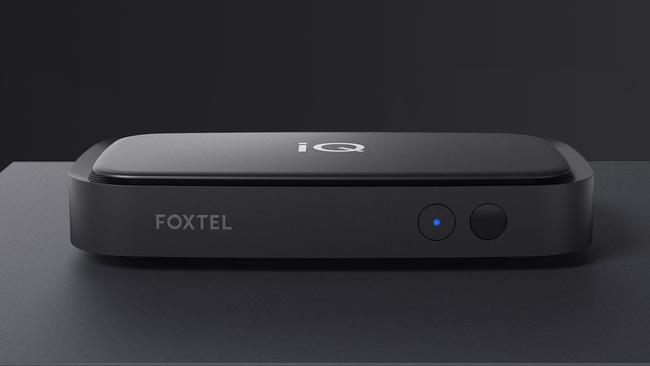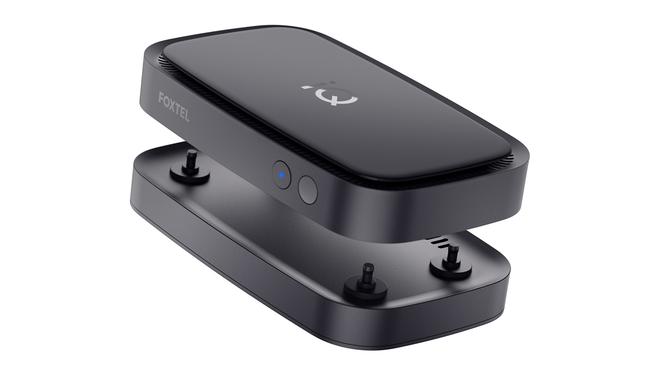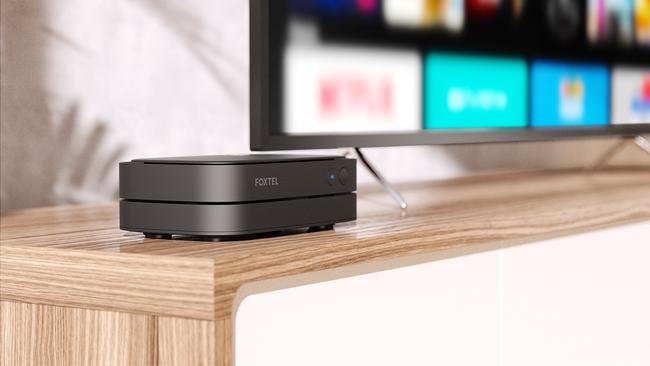Hands on with Foxtel’s latest IQ5 set-top box
We go hands on with Foxtel’s IQ5 set-top box and it is smaller, easier to install, faster to operate, and ditches content delivery by cable.

Foxtel’s latest IQ5 box is smaller, easier to install, faster to operate, and ditches the delivery of content by cable. It has an interface that lets you switch seamlessly between traditionally free-to-air and Foxtel channels covering news, sport and entertainment, on demand movies, TV shows and apps.
To me, Foxtel’s central offering still is in-house produced live content, whether it be Sky News and Fox content internationally, or Fox sports, particularly Foxtel‘s current coverage of the AFL and NRL. With football finals in full swing, I have been using the IQ5 to soak up the action and commentary.
The IQ5 has inputs on the back for satellite, a TV aerial input, HDMI out for connecting to a TV, a USB slot and optical audio out. Internet connectivity is via Wi-Fi or Ethernet cable.
Once installed you can centre your whole entertainment experience through the IQ5 box and everything can be controlled using the Foxtel smart remote.
You can scan Foxtel’s extensive menu of channels or build a TV schedule around your favourite free-to-air and Foxtel channels.
The IQ5 addresses the reality of change. Cable connectivity is out, with Foxtel’s use of Telstra’s hybrid fibre coaxial (HFC) cable ending in June 2023. Conversely, internet connectivity is in, which will be an alternative for current cable customers along with satellite.
The IQ5 comes with a clip-on one terabyte hard drive unit. You can record free-to-air and Foxtel content for later viewing. The disk lets you pause and rewind live TV and resume watching it later, just as a conventional DVR does.
The IQ5 accesses multiple Foxtel streaming profiles to work out the best streaming rate for your internet connection.
Without cable input, free-to-air TV channels come entirely via your TV aerial although you can watch a few free-to-air channels via their apps, such as through ABC iview.
The move to internet streaming means there is some overlap between full Foxtel on the IQ5 and Foxtel Now, which is already available as an internet streaming service. Foxtel Now is cheaper too: $99 for a Foxtel Now box and $25 monthly for the essentials pack, compared to $199 for the IQ5 with the 1 terabyte hard drive, $49 per month for the entry pack and a $35 set-up cost.

However, as Foxtel points out, Foxtel Now lacks some features of the main Foxtel: no voice remote or voice control, no personalised recommendations, and no 4K Ultra HD compatibility.
Foxtel Now, free-to-air TV and apps don’t present as an aggregate experience as regular Foxtel does.
Foxtel Now isn’t compatible with all TVs but it is available through Telstra TV, PS4, and some Sony, Hisense, LG and Samsung TVs. You can watch it on phones, tablets and laptops.
Foxtel Now offers only around two thirds the channels and less content that regular Foxtel does.
The IQ5 offers six apps: Netflix, ABC iview, SBS On Demand, ABC Kids, YouTube and YouTube Kids with Vevo Music and Amazon Prime Video launching shortly. Foxtel is aware that eight apps isn’t many and plans to beef-up the apps offering.
Foxtel also has longer term plans to increase the number of native 4k/UHD channels. Currently there are two – Fox Sports UHD and Movies UHD, channels 508 and 400. Live content including AFL, NRL, cricket, Formula One and racing is shot and streamed on these channels in 4K, not just scaled up from 1080p. You need around 12 megabits per second to get this content at 4K resolution.
As for other channels, video on demand streams at up to 1080p and live Foxtel channels at 720p, with. Some of these will be scaled up to 1080p.
Foxtel says the still limited availability of native 4K movies is reason not to be too excited; it will increase 4K availability over time and is proud of its native 4K sports coverage using its own production resources.

The company wants to increase its 4K offering rather than delve into 8K.
Given free-to-air is locked in at 1080p maximum, offering more 4K live events is something that Foxtel could further develop as it repositions itself in today’s crowded online content market. Demand for 4K live content should increase as TVs continue to get larger and the resolution difference between 1080p and 4K resolution becomes more noticeable.
The IQ5 has built-in voice control. You speak into the remote. I could summon apps by naming them, such as “launch Netflix” or “launch ABC”. Using voice I could change channels by saying “Go to Fox Footy”, turn closed captions on and off, control the volume, and select menu options, for example ”go to the store”.
I could use voice commands to find content such as “find Nicole Kidman” and add “just the ones with Ewan McGregor”. The search returns only Foxtel content, but in future Foxtel plans for searches to include third party content.
It‘s been a quarter of a century since News Corp (publisher of The Australian) and Telstra partnered to bring a 20-channel service to Australian customers through HFC. Australian internet at the time was dial-up, and Netflix, today’s doyen of streaming entertainment services, wouldn’t officially enter Australia until 2015.
That Foxtel’s entertainment system has been in market for 25 years is no mean feat.
In 2021 the entertainment panorama is different, with cheap internet-based streaming options integrated into smart TV menus, including Foxtel-owned streaming subscription services Binge and Kayo sports, and Foxtel Now.
But if you want Foxtel’s all-you-can-eat offering of more than 50 channels, sports, movies and news, integrated into a seamless experience, or depend on satellite, there’s the IQ5.
More Coverage





To join the conversation, please log in. Don't have an account? Register
Join the conversation, you are commenting as Logout